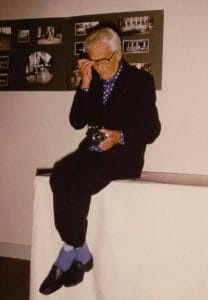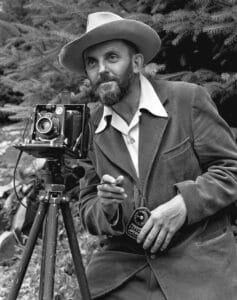A Childhood Beginning: Avedon Meets Rachmaninoff
Imagine being just ten years old, picking up a camera for the first time, and your very first subject is one of the most celebrated composers of the era. This wasn’t a childhood fantasy; it was the real-life beginning for Richard Avedon, who would become one of the most influential photographers of the 20th century. His inaugural foray into portraiture was none other than the Russian maestro, Sergey Rachmaninoff.
Born in New York City in 1923, Avedon grew up in a household where art and culture were valued, but no one could have predicted the extraordinary trajectory of his career. That first photograph of Rachmaninoff, taken with a simple Kodak Box Brownie, was never preserved, but the story itself has become part of photographic lore. It illustrates how a single moment of artistic curiosity can ignite a lifelong passion. From that early encounter, Avedon began to see the camera not just as a tool for recording appearances, but as a means of uncovering hidden truths.
Over the decades, Avedon would refine this instinct into a signature style that redefined portraiture. His images of cultural icons—Marilyn Monroe, Andy Warhol, the Beatles, and countless others—were not glamorous façades but unflinching studies of vulnerability, doubt, and humanity. He had a unique gift for stripping away the noise of fame and fashion to reveal the fragile, unguarded self beneath. Whether his sitter was a president, a poet, or an anonymous drifter, Avedon approached them with the same intensity of gaze.
The Art of the Portrait
What makes a photographic portrait truly captivating? For me, it’s that elusive ability to capture more than a likeness—to capture a story, a mood, or a sliver of the soul. Avedon mastered this art with remarkable consistency. His stark white backgrounds, first popularised in the 1960s, became a hallmark of his work. By removing all environmental context, he forced the viewer’s attention onto the subject’s expression, their posture, the life etched into their features.
This approach was revolutionary. At a time when fashion photography often relied on elaborate sets and glamorous illusions, Avedon’s pared-down style was almost confrontational in its simplicity. His portraits of drifters, miners, and working-class Americans in the series In the American West (1979–1984) demonstrated that the same visual language he applied to celebrities could also elevate ordinary lives into profound visual narratives. These images, monumental in scale and deeply empathetic in tone, remain some of the most powerful examples of portraiture in modern art.
The philosophy behind Avedon’s work—that a powerful image can tell a profound story—is something I see reflected in the work of many contemporary art photographers. For instance, if you appreciate the drama and quiet poetry found in striking visual compositions, you might find a kindred spirit in the Architecture collection on my site. Like a great portrait, these monochrome artworks explore form, light, and perspective, turning the built environment into a canvas for human ambition and history.
Finding Your Own Focal Point
Avedon’s legacy reminds us that great art isn’t just about what you see, but how you see it. His career was a lifelong meditation on perception: the idea that the camera could reveal truths invisible to the casual glance. He once remarked that “a portrait is not a likeness. The moment an emotion or fact is transformed into a photograph it is no longer a fact but an opinion.” This insight underscores the interpretive power of photography—every image is a dialogue between subject, photographer, and viewer.
Bringing this level of artistic vision into your own space can transform a room, offering a daily source of inspiration and contemplation. Avedon’s portraits remind us to look closer, to find the extraordinary in the everyday, and to embrace the imperfections that make us human.
If Avedon’s story has sparked your interest in the power of photographic art, I invite you to explore the collections I have curated. Each piece is available as a high-quality print, ready to bring a touch of narrative depth and sophistication to your home or office. Discover an artwork that speaks to you and invest in a visual story that you’ll cherish for years to come.









One Comment
Have you ever taken a portrait or seen a photograph that revealed something unexpected about its subject? I’d love to hear what makes a portrait truly memorable for you.